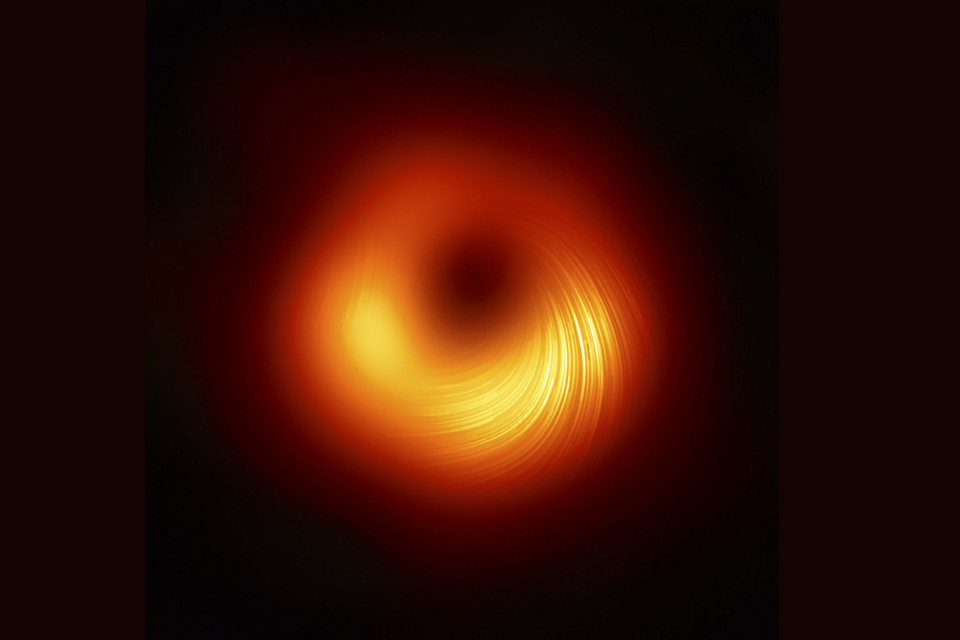On the edge of a black hole
Professor John Wardle explains the significance of a new image of a black hole's magnetic fields.
 EHT Collaboration
EHT CollaborationPolarised view of the black hole in M87. The lines mark the orientation of polarisation, which is related to the magnetic field around the shadow of the black hole.
Black holes don't just take in matter. They also spit it out.
From their polar regions, they can launch massive jets of energetic plasma that travel at nearly the speed of light, stretch longer than our galaxy and last for many millions of years.
Today, an international consortium of scientists who are part of the Event Horizon Telescope (EHT) project announced they'd imaged the magnetic fields around a black hole. It is thought that these are closely related to how the jets are launched.
The finding may yield new insights into the jets. It may also help explain how magnetic fields enable black holes to "eat" some matter while ejecting other matter back into the universe.
"We really are beginning to see what's going on around the black hole," said Brandeis professor of astrophysics John Wardle, an expert on radio astronomy.
Wardle joined EHT in 2014 and was part of the team two years ago that announced it had created the first-ever image of a black hole.

John Wardle
In an unprecedented and technologically-daring scientific feat, the EHT harnessed the power of eight telescopes located across the globe, effectively creating a "virtual telescope” capable of measuring the length of a credit card on the moon’s surface.
They then aimed the telescope array at the supermassive black hole located at the center of Messier 87 (M87), a giant elliptical galaxy located 55 million light-years from Earth. The resulting photo of M87 made headlines around the world.
The images released today focus on the magnetic fields surrounding M87’s black hole. They were made by measuring the polarization of the radio waves emitted close to the black hole.
Just like it does in sunglasses, polarization around the black hole reduces reflections and glare. This way astronomers can sharpen their vision of the region around the black hole and map the magnetic field lines present at the black hole's inner edge.
The image of polarized light enabled astronomers "for the first time to look into the region just outside the black hole where [the] interplay between matter flowing in and being ejected out is happening," EHT said in a press release.
Between 1984 and 2013, Wardle worked with his colleague David Roberts, the William R. Kenan Jr. Professor Emeritus of Astrophysics, and their graduate students to develop new techniques for measuring the polarization of cosmic radio waves using widely separated antennas.
Their research played a major role in calibrating the telescopes used by the EHT.
According to Wardle, it's still not fully understood how the plasma jets are launched from black holes. The leading theory, he said, is that magnetic fields play a critical role.
Wardle said the magnetic fields tap into the rotational energy of the nearby orbiting gas or of the spinning black hole itself and use it to launch the plasma jets. He said it's a bit like how the rotation of an alternator in a car generates electric currents that charge the battery.
Jets from black holes are common throughout the universe, making them a rich topic of research for astronomers.
"We're beginning to understand that the jets pump so much energy back into their host galaxy that they play important roles in star formation and in the evolution of the galaxy," Wardle said.
Categories: Research, Science and Technology





